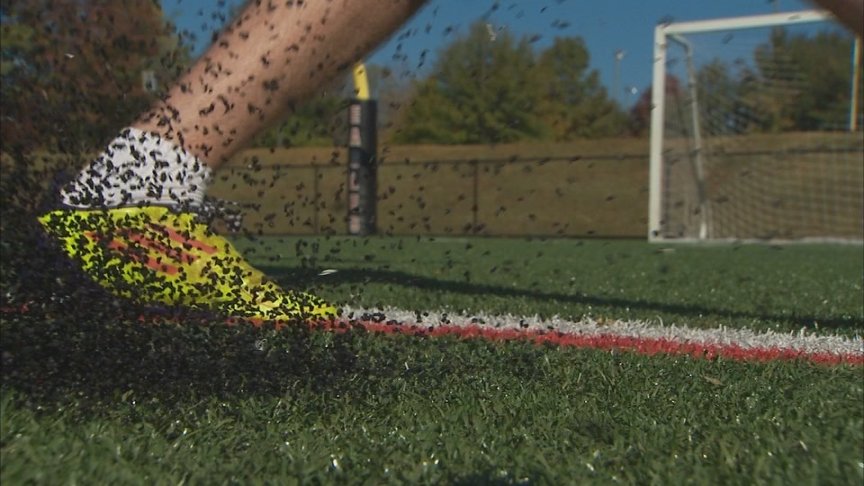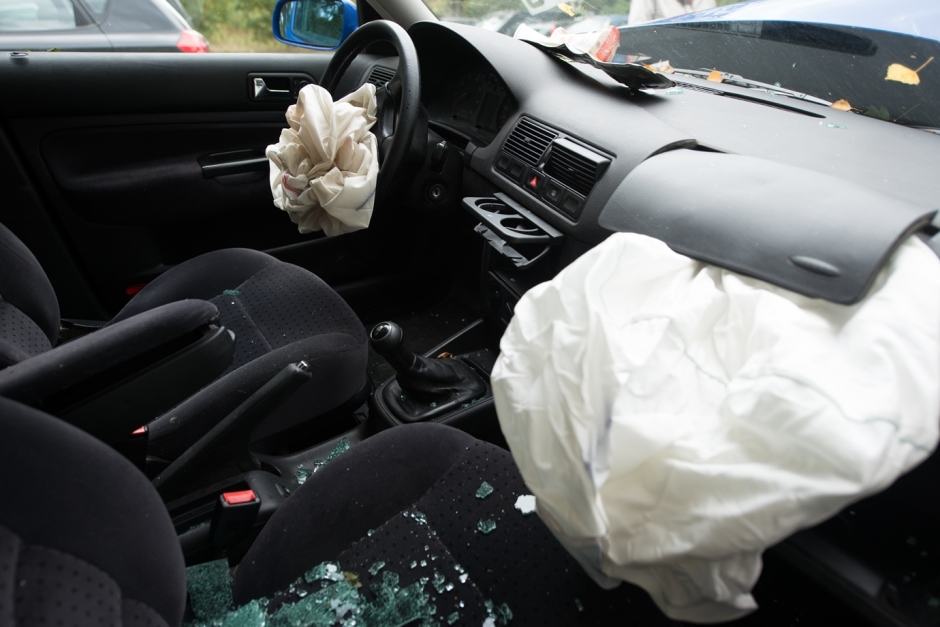
Possible Link Between Athletic Field Turf and Cancer
Possible Link Between Athletic Field Turf and Cancer
Jazlowiecki & Jazlowiecki is currently investigating claims that a link exists between a new athletic field turf and cancer. The new athletic turf that has been popping up all over the country for the past 2 decades is known as ‘field turf’ or ‘sprint turf,’ and is comprised of tiny rubber particles called butadiene rubber or “crumb rubber,” essentially old tires and synthetic fibers.
The turf has been lauded for decreasing both the frequency and severity of injuries in young athletes, including muscle tears, ligament damage, and concussions. The turf, often used as soccer fields, football fields, as well as for field hockey and lacrosse, provides a softer playing surface with the rubber pellets as compared to older artificial turf surfaces or even natural grass. It is also heralded for the ease of its drainage as well as its simple upkeep as compared to the upkeep of natural grass surfaces.
While the advantages seem endless, they may becoming at a devastating cost. Cancer. Recent reports, including those done by NBC Nightly News, are shedding light that this field turf may be toxic and causing cancer in young athletes. While no casual connection has yet been established, the rubber crumbs in the turf have been known to carry cancer causing chemicals. The same NBC report indicated at least 38 young athletes, that play on this type of turf, have been diagnosed with cancer (often lymphoma and leukemia) and that shockingly 34 of these athletes were soccer goalies.
If you or someone you know has been diagnosed with cancer or other serious illness, and has spent significant time playing on artificial turf field with rubber pellets (synthetic fibers and rubber tires known as “crumb rubber”), contact the Law Firm of Jazlowiecki & Jazlowiecki to learn about the potential lawsuit. Our Office can be reached via Email or by phone at (860) 674-8000.
Connecticut crumb rubber attorney, crumb rubber lawyer, soccer field cancer lawyer attorney, football field cancer lawyer
From the Washington Post, Cindy Boren:
Every day, hundreds of thousands of soccer goalies come home from competing on artificial turf fields and remove rubber crumbs from their hair, mouths, nose and abrasions, shaking the stuff from their clothing and gear. The particles, called butadiene rubber or “crumb rubber,” is made from synthetic fibers and scrap tires. It raises dust over the fields and smells like, well, former tires. Now, a number of people are questioning the safety of fields that contain those crumbs and an NBC News report cited incidences of cancer specifically among goalies. Because of a lack of research, it is not clear whether there is a causal connection yet, but it’s a question worth exploring because the material can contain benzene, carbon black and lead and it’s prevalent on the soccer fields at schools and parks across the country. The turf is the latest iteration of the artificial playing surface, one that carried the promise of a softer impact for athletes — important in an era of increasing awareness of the dangers of concussions. In 2009, Amy Griffin, the associate head soccer coach at the University of Washington, was visiting two female goalies who had been diagnosed with non-Hodgkin’s lymphoma, when a nurse brought a disturbing trend to her attention. NBC’s Hannah Rappleye reports: That day, the nurse looked down at the woman Griffin was sitting with and said, “Don’t tell me you guys are goalkeepers. You’re the fourth goalkeeper I’ve hooked up this week.” Later, the young woman with the chemo needle in her arm would say, “I just have a feeling it has something to do with those black dots.” Artificial turf fields are now everywhere in the United States, from high schools to multi-million-dollar athletic complexes. As any parent or player who has been on them can testify, the tiny black rubber crumbs of which the fields are made — chunks of old tires — get everywhere. In players’ uniforms, in their hair, in their cleats. But for goalkeepers, whose bodies are in constant contact with the turf, it can be far worse. In practices and games, they make hundreds of dives, and each plunge sends a black cloud of tire pellets into the air. The granules get into their cuts and scrapes, and into their mouths. Griffin wondered if those crumbs – which have been known to contain carcinogens and chemicals – were making players sick. “I’ve coached for 26, 27 years,” she said. “My first 15 years, I never heard anything about this. All of a sudden it seems to be a stream of kids.” Since then, Griffin has compiled a list of 38 American soccer players — 34 of them goalies – who have been diagnosed with cancer.
At least a dozen played in Washington, but the geographic spread is nationwide. Blood cancers like lymphoma and leukemia dominate the list. The turf, whether toxic or not, is also drawing attention as “the next battlefield for workplace gender discrimination,” as Quartz puts it. FIFA plans to use the turf, rather than natural grass, for the women’s World Cup next summer in Canada, a decision that prompted a lawyer representing Abby Wambach and other stars to file a lawsuit in the human rights tribunal of Ontario. The issue gained traction when Sydney Leroux tweeted a photo of her legs after a game — and it was immediately shared by Kobe Bryant, Kevin Durant and others.
Whether there are greater dangers to health, though, is uncertain. “NBC’s own extensive investigation,” Rappleye writes, “which included a review of the relevant studies and interviews with scientists and industry professionals, was unable to find any agreement over whether crumb turf had ill effects on young athletes, or even whether the product had been sufficiently tested.”
While more testing is needed, New York City moved to stop installing crumb rubber fields in its parks in 2008 and the Los Angeles Unified School District did the same in 2009. In Maryland, the Safe Healthy Playing Fields Coalition supports legislation to require warning signs at artificial turf fields and opposes a bill to use state funds to construct artificial turf fields.
Meanwhile, Griffin continues to do her own research on the topic, telling Rappleye that she sends crumbs from each field her team plays on to a lab for testing. “I’m looking for answers, because I’m not smart enough to come up with them on my own,” Griffin said. “I would love someone to say, ‘We’ve done some tests and we’ve covered all of our bases — and, yes, it’s safe.’ That would be awesome. I would love to be proved wrong.”



